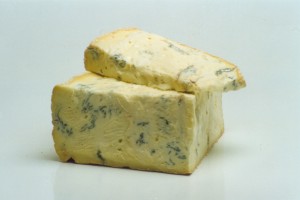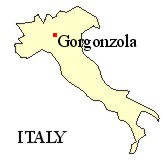
|
|
|||||
This cheese takes its name from the village of Gorgonzola, which lies north of Milan in Northern Italy. The exact birthdate of Gorgonzola is not known, there are estimates ranging from the ninth century through to the twelfth century. Some even believe that the Romans produced a cheese similar to Gorgonzola. Since time immemorial, the cattle herds have stopped off at Gorgonzola on their way back from the mountains, before separating out to return to their respective villages in the Po valley for the winter. According to one popular story, Gorgonzola was discovered by an innkeeper from Lombardy, who dished up a mouldy stracchino cheese to some passing customers. Far from protesting, they highly praised such strange taste, thus decreeing the success of the first mould-inoculated cheese. For centuries the cheese was known as 'green stracchino' but on 30 October 1955 the name Gorgonzola was given. In 1970 the Association for the Protection of Gorgonzola took over control of all aspects of the production and marketing of the cheese - legally there are only two regions in Italy that are permitted to manufacture Gorgonzola cheese, and only certain provinces within these regions. In Piedmont there are the provinces of Novara, Vercelli, Cuneo and Casale Monferrato, and in Lombardy there are the provinces of Bergamo, Brescia, Como, Cremona, Milan and Pavia. Only milk from the dairy farms of these areas may be used to produce Gorgonzola and these cheeses are able to display their D.O.C. status. Although the basic principles used to produce most cheeses are the same, Gorgonzola does use some more unusual methods. The curds are laid in layers in moulds lined with fine canvas. The bottom, the sides and the top are coated with the warm curds from the morning's milking. The cold curds of the evening's milking are then poured into the middle. The cheeses are taken out of the moulds but kept in the canvas, and left upside-down to drain for 24 hours. The canvas is then removed and they are put back into the moulds, salted and turned over several times during the following week. After the first maturation which takes less then 2 months, holes are made in the cheese to allow the air to penetrate thus causing the green mould to form. The second phase of maturation lasts another few weeks. The type of Gorgonzola we prefer to sell at the Teddington Cheese is Gorgonzola Dolce. It is made from full fat unpasteurised milk and the paste is white or pale straw coloured, soft and has green veining. The rind is a natural grey colour with the brand name stamped on in red. The taste is sweet, and just a touch piquant. Each cheese weights 6 to 12kg, measures 25 to 30cm in diameter and is 16 to 20cm tall and has a fat content of 48%. Gorgonzola Piccante is firmer and fuller flavoured but does not have the spreading quality of the Gorgonzola Dolce. Gorgonzola can be enjoyed with crusty bread, fresh or toasted, or on top of a piping- hot slice of polenta. This cheese has found favour with chefs and is now used in hundreds of ways in the kitchen. A full bodied and robust red wine is a good accompaniment, but Gorgonzola Dolce can also be enjoyed with a sweeter white or even a rosť wine. Click here or press your 'Back' button to return |
|
|||||
| All articles © www.teddingtoncheese.co.uk | ||||||
